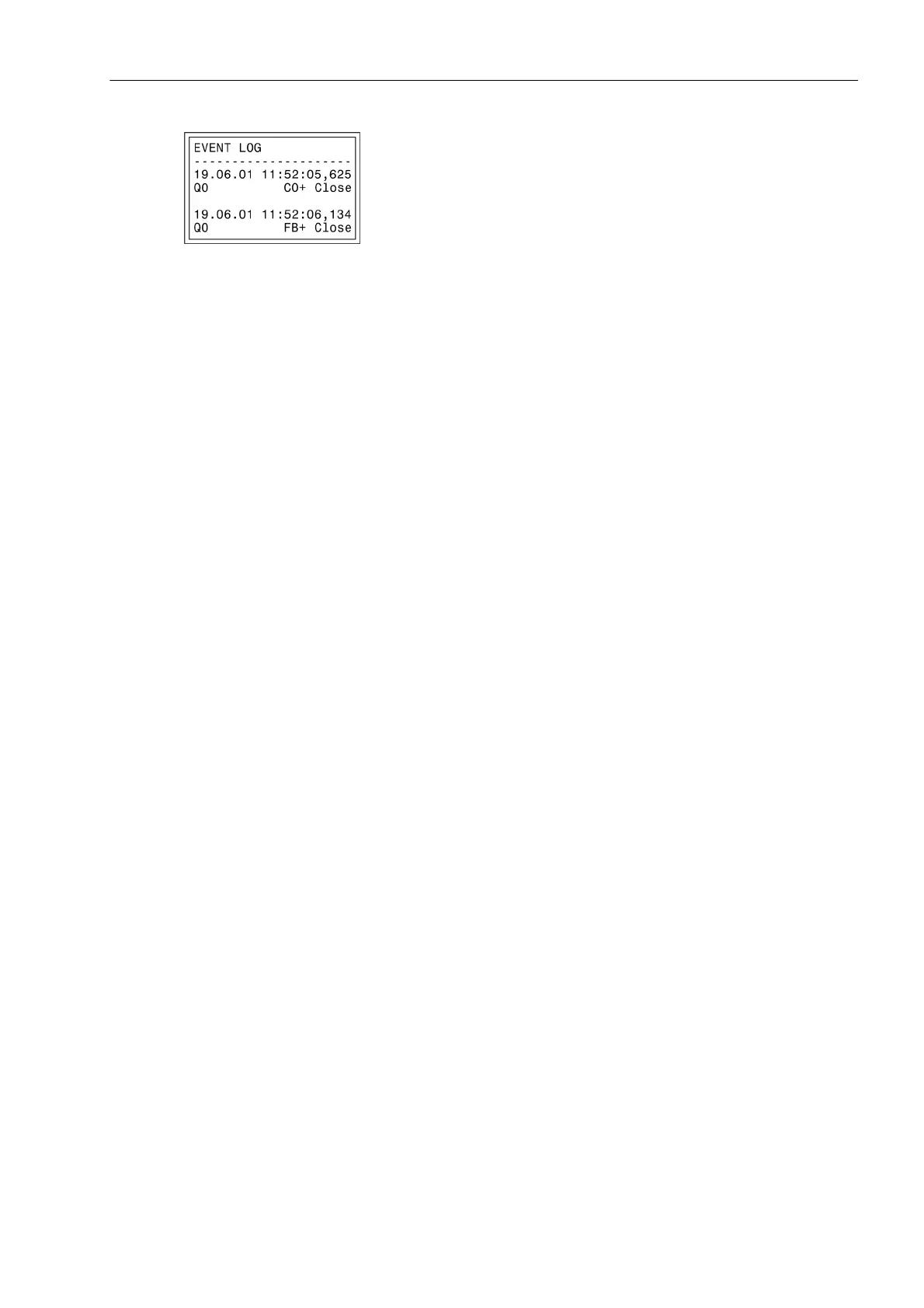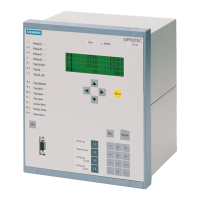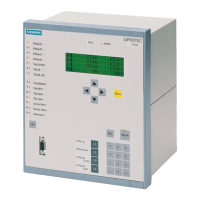Functions
2.50 Command Processing
SIPROTEC, 7UM62, Manual
C53000-G1176-C149-7, Release date 03.2010
353
Figure 2-148 Example of an operational indication for switching circuit breaker (Q0)
Standard Interlocking (hard-coded)
The following is a list of Standard Interlocking Conditions that can be selected for each controllable device. All
of these are enabled as a default.
• Device Position (scheduled vs. actual comparison): The switching command is rejected, and an error indi-
cation is displayed if the circuit breaker is already in the scheduled (desired) position. (If this check is en-
abled, then it works whether interlocking, e.g. zone controlled, is activated or deactivated.)
• System Interlocking: The system interlocking is checked by transmitting a local command to the central con-
troller with the switching authority set to = Local. Switchgear that is subject to system interlocking cannot be
switched by DIGSI.
• Bay Interlocking: Logic combinations deposited in the device using CFC are scanned and taken into consid-
eration for interlocked switching.
• Blocked by Protection: A CLOSE-command is rejected as soon as one of the protective elements in the relay
picks up. The OPEN-command, in contrast, can always be executed. Please be aware, activation of thermal
overload protection elements or sensitive ground fault detection can create and maintain a fault condition
status, and can therefore block CLOSE commands. If the interlocking is removed, consider that, on the other
hand, the restart inhibit for motors will not automatically reject a CLOSE command to the motor. Restarting
would then have to be interlocked in some other way. One method would be to use a specific interlocking in
the CFC logic.
• Double Operation: parallel switching operations are interlocked against one another; while one command is
processed, a second cannot be carried out.
• Switching Authority LOCAL: A switching command of the local control (command with command source
LOCAL) is only allowed if a LOCAL control is allowed at the device (by configuration).
• Switching Authority DIGSI: Switching commands that are issued locally or remotely via DIGSI (command
with command source DIGSI) are only allowed if remote control is admissible for the device (by configura-
tion). When a DIGSI-computer logs on to the device, it enters its Virtual Device Number (VD). Only com-
mands with this VD (when Switching Authority = REMOTE) will be accepted by the device. Remote switching
commands will be rejected.
• Switching Authority REMOTE: A switching control command (command with source of command REMOTE)
is only allowed if REMOTE control is admissible at the device (by configuration).

